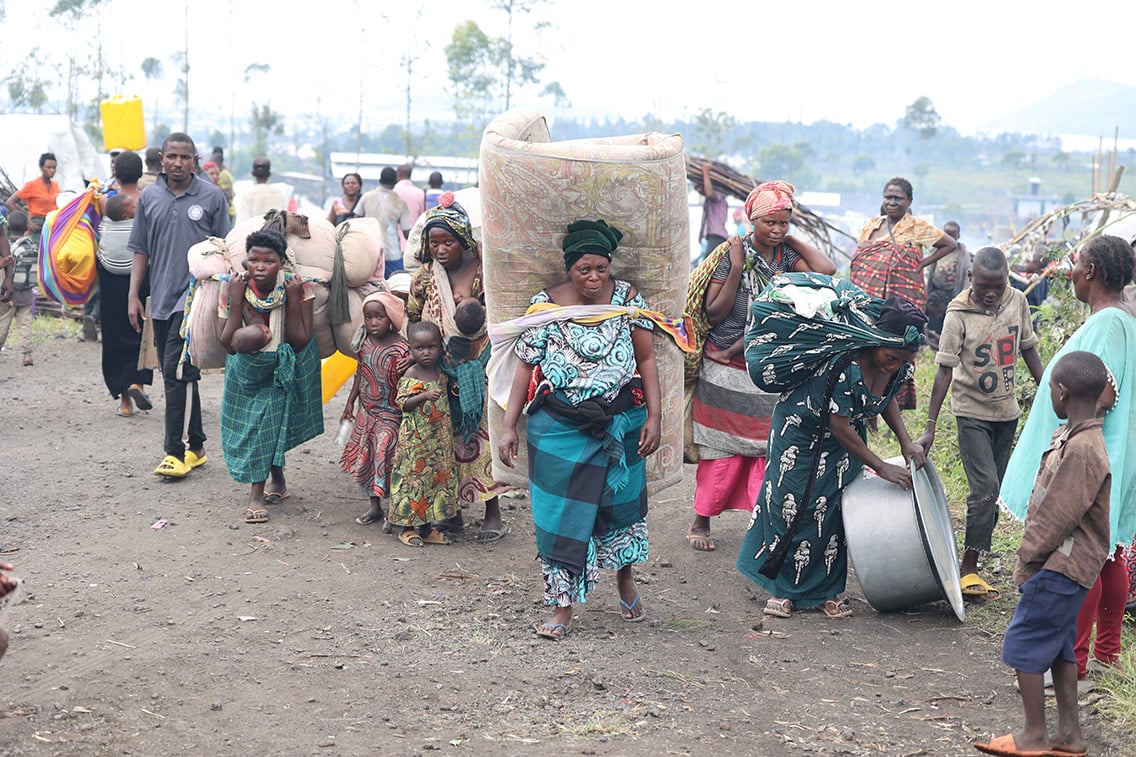UNHCR worried about instability in eastern DRC as newest refugees return home
UNHCR worried about instability in eastern DRC as newest refugees return home

KAMPALA, Jan. 23 (UNHCR) - In a rapidly developing series of events, Congolese refugees have already begun going back home from Uganda, just days after they fled fighting in the Kivu region of eastern Democratic Republic of the Congo (DRC).
Over the weekend, the UN refugee agency sent teams to the border between Uganda and the Democratic Republic of the Congo in response to the arrival of some 20,000 people in the previous few days.
However, on Sunday and Monday, some of the recent arrivals - perhaps as many as 2,000 - crossed back into their homeland, evidently encouraged by assurances by Congolese officials that the fighting had died down.
"What is most worrying is the unpredictability of the situation," said Montserrat Feixas Vihe, Acting UNHCR Representative in Kampala, whose office has been assessing the needs of the Congolese arrivals.
"Now people are going back, but at the same time, reports from DRC say we have to expect worse things," she added. "The situation is very volatile and could change any moment. We are very worried."
Over the weekend, UNHCR staff reported that some 15,000 refugees were staying in the open at an airfield in Kisoro, 450 km (280 miles) south-west of Kampala. That group has now shrunk to about 13,000; some 5,000 say they may be willing to move to a site further inland.
Another group, estimated at 5,000, was in Uganda's Kanungu district, at the border hamlet of Ishasha. Most of the refugees were reported in good shape and many of those at Ishasha brought their own food and livestock.
The refugees in Kisoro told UNHCR staff that they had crossed into Uganda to get away from the fighting, while those at Ishasha said they had fled because they feared being attacked. They were not eager to move further inland, but said they wanted to stay close to the border so they could return home to the DRC as soon as they felt it was safe.
In accordance with international practice, UNHCR and its partners distributed only water at the sites next to the border. The UN refugee agency does not usually distribute food and other aid at any border; refugee camps are generally located a minimum of 50 kilometres away from an international border for the safety of the refugees.
If the new Congolese refugees move further inland to settlements provided by the Ugandan government, they would get access to other relief items, including blankets, jerry cans, tool sets and plastic sheets from UNHCR emergency stockpiles that have been sent to the region.
During the wars and local battles of the last decade, Congolese from the Kivus have frequently sought shelter in western Uganda. Before the latest influx, Uganda was home to some 208,000 refugees, including 168,800 Sudanese, 20,200 Congolese, and 15,600 Rwandans.








